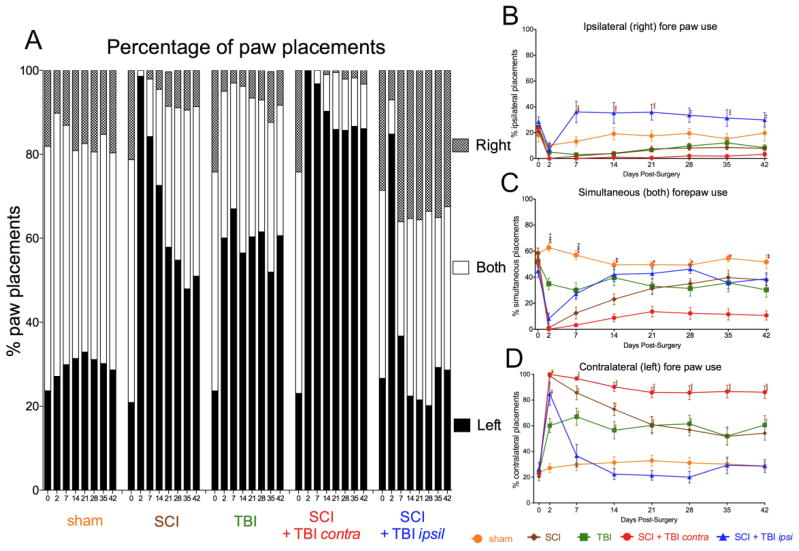FIG. 2.
Paw placements in the cylinder. (A) The percentage of total paw placements (left, right, or both) is shown for each group. (B) The proportion of total paw placements made by the ipsilateral (right) paw is shown. (C) The proportion of total paw placements made simultaneously by both paws is shown. (D) The proportion of total paw placements made by the contralateral (left) paw is shown. (A–D) The performance of sham rats did not significantly differ from pre-injury at any time post-operatively. SCI alone rats showed a profound deficit that recovered to the level of TBI alone rats over 42 days weeks. TBI produced a stable deficit in paw placement that did not recover over 6 weeks. SCI + contralateral TBI produced a profound deficit that failed to recover over 42 days, showing an almost complete preference for the limb contralateral to the SCI. SCI + ipsilateral TBI rats initially did not use the right forepaw (2 days after the injury) but they then significantly increased right limb use (i.e. ipsilateral to the SCI). (B) SCI + ipsilateral TBI significantly increased ipsilateral forepaw use compared to SCI + contralateral TBI rats 7 days after surgery. (C) SCI + contralateral TBI significantly reduced simultaneous forepaw use compared to sham. (D) SCI + contralateral TBI significantly enhanced contralateral forepaw use compared to both sham and SCI + ipsilateral TBI rats 7 days after surgery. SCI: spinal cord injury, TBI: traumatic brain injury, ○: significant difference compared to sham group, ◇ :significant difference compared to SCI group, □ :significant difference compared to TBI group, ▲ :significant difference compared to SCI + ipsilateral TBI group

